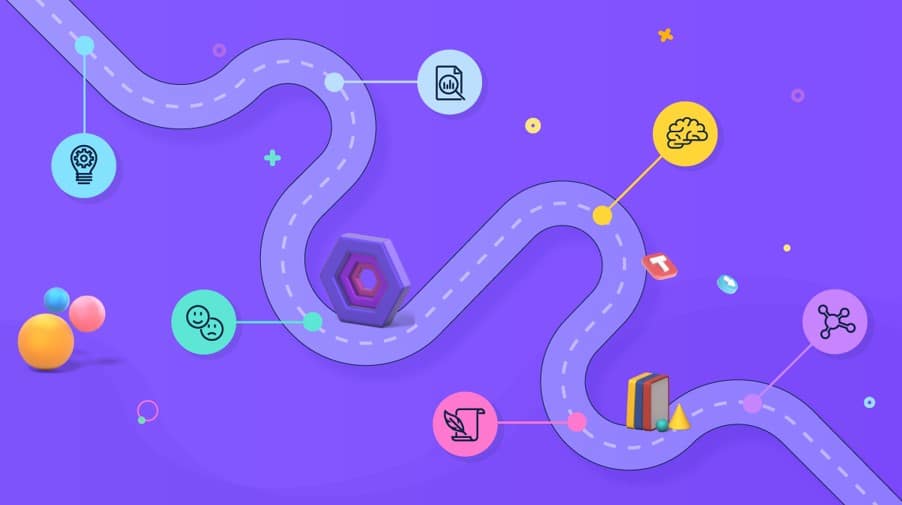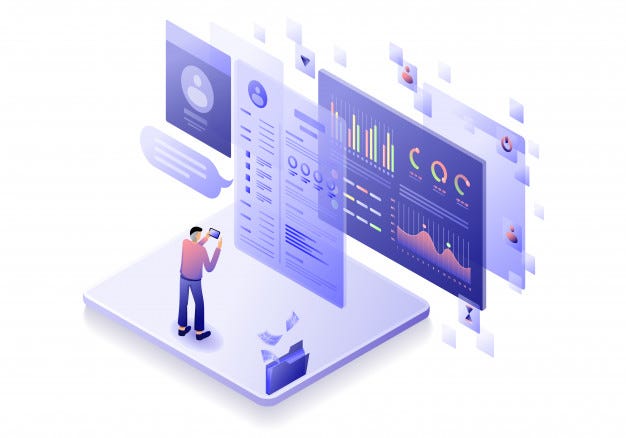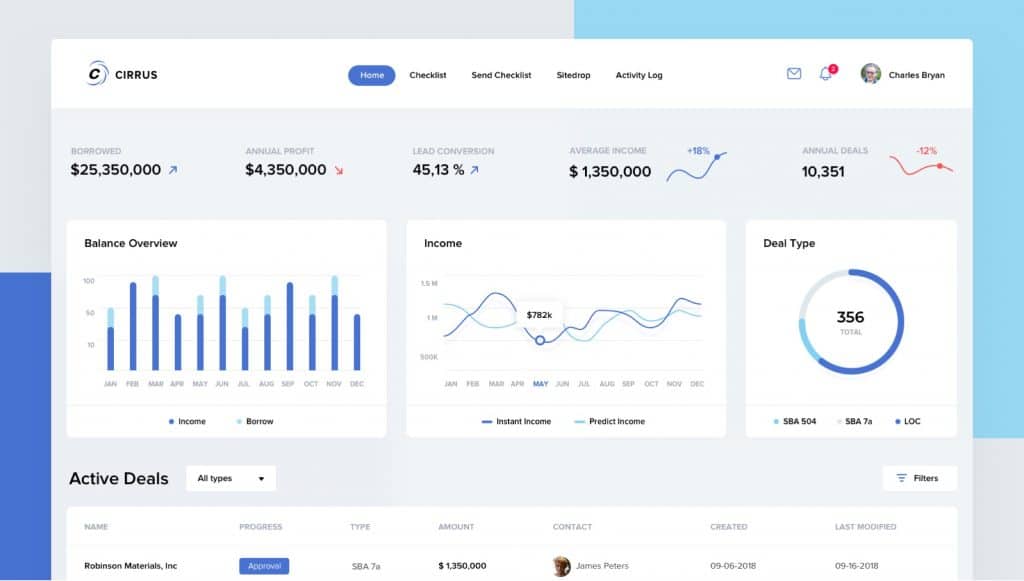In the realm of Software as a Service (SaaS), the role of User Experience (UX) design stands as a linchpin for success. As businesses increasingly rely on SaaS solutions, the design principles shaping user interactions become a defining factor in their adoption and longevity. Crafting a seamless user journey isn’t just about aesthetics; it’s about fundamentally understanding how users interact with digital platforms. The nuances of UX design in SaaS applications go beyond surface-level design elements, impacting user retention and overall customer satisfaction. By exploring the intricacies of SaaS UX design, we unravel the layers of significance behind a well-crafted user experience.
Understanding the Role of UX Design in SaaS
The role of UX design in SaaS platforms is foundational to the success of software solutions delivered through cloud-based infrastructures. It plays a critical part in ensuring that users can navigate complex systems with ease, ultimately contributing to user satisfaction, retention, and the overall prosperity of the service. Understanding the essence of UX design within the SaaS context is key to creating interfaces that not only meet but exceed user expectations, driving positive business outcomes.
Defining UX Design Within the SaaS Context
In the realm of Software as a Service (SaaS), the role of UX design takes on a distinctive significance due to the nature of cloud-based delivery and continuous user interaction. Understanding the unique characteristics of SaaS platforms allows designers to tailor experiences that cater to the dynamic needs of users accessing services remotely. By focusing on usability, accessibility, and user engagement, UX design in the SaaS context plays a critical role in shaping the success and adoption of software solutions within evolving digital landscapes.
What Makes SaaS UX Unique?
With the rise of Software as a Service (SaaS) platforms, the distinctive nature of UX design within this realm is characterized by its emphasis on seamless user interactions and intuitive interfaces.
- Efficiency: Streamlined processes enhance user productivity.
- Personalization: Tailored experiences foster user engagement.
- Adaptability: Dynamic interfaces cater to evolving user needs.
Key Principles of Effective SaaS UX Design
Efficient SaaS UX design hinges on simplifying intricate functionalities to ensure users can navigate the platform with ease. By streamlining complex processes, SaaS products become more user-friendly, enhancing overall usability and customer satisfaction. These key principles lay the foundation for a successful user experience, driving engagement and fostering loyalty among users.
Key UX Principles for SaaS Design
| Principle | Description | Importance |
|---|---|---|
| Simplicity | Focus on minimal design that emphasizes ease of use. | Reduces user confusion and enhances satisfaction. |
| Consistency | Ensure uniformity in design elements across the platform. | Builds user trust and improves navigation. |
| Feedback | Provide immediate and clear feedback for user actions. | Increases user interaction and reduces errors. |
| Accessibility | Design for all types of users, including those with disabilities. | Expands market reach and complies with legal standards. |
| Personalization | Allow customization options to meet individual user needs. | Enhances user experience and loyalty. |

3. Simplifying Complex Functionalities in SaaS
In the realm of Software as a Service (SaaS), simplifying complex functionalities is paramount for optimal user experience. By focusing on key principles of effective SaaS UX design, such as streamlining workflows and enhancing usability, software providers can ensure a seamless interaction for users. Understanding essential UX metrics for SaaS enables designers to create intuitive interfaces that facilitate user engagement and satisfaction.
Essential UX Metrics for SaaS
An integral aspect of optimizing Software as a Service (SaaS) platforms lies in understanding and utilizing essential UX metrics to enhance user experience and drive sustained user engagement.
- Conversion Rate: Measure user actions.
- User Satisfaction Score: Gauge happiness levels.
- Task Success Rate: Evaluate completion efficiency.
The SaaS Development Process: A UX Perspective
The SaaS development process from a UX perspective necessitates the integration of user-centered design principles at every stage of the development lifecycle. By incorporating UX considerations from the initial planning phase through to deployment and beyond, SaaS products can better align with user needs and preferences. This approach ensures that user experience remains a focal point, leading to more intuitive interfaces and enhanced overall satisfaction with the service.
Incorporating UX at Every Stage of the Development Lifecycle
Throughout the SaaS development process, integrating User Experience (UX) design at every stage is crucial for creating a cohesive and user-centric software solution. This approach ensures that user needs and preferences are considered from the initial planning phases to the final product release, leading to a more satisfying and engaging user journey. To emphasize the importance of incorporating UX design at each stage of development, consider the following:
- Empathy: Understanding the user’s perspective fosters empathy and allows for the creation of solutions that truly resonate with their needs.
- Iterative Improvement: Continuously refining the user experience based on feedback leads to a more polished and user-friendly product.
- Consistency: Maintaining consistency in design elements and interactions across the software enhances usability and builds trust with users.
Common UX Mistakes in SaaS and How to Avoid Them
Ensuring a seamless user experience in SaaS platforms necessitates a keen awareness of the common UX mistakes that can hinder user satisfaction and retention rates. It is crucial for SaaS providers to identify and address these pitfalls to maintain a competitive edge in the market. Below is a table outlining some common UX mistakes in SaaS and strategies to avoid them:
| Common UX Mistakes | Impact on Users | Prevention Strategies |
|---|---|---|
| Complex Navigation | Confusion and Frustration | Implement clear and intuitive navigation paths. |
| Overwhelming Features | Cognitive Overload | Prioritize features based on user needs and simplify the interface. |
| Lack of Personalization | Generic User Experience | Utilize data to personalize user interactions and tailor content. |
| Inconsistent Design | Lack of Coherence | Establish design guidelines and maintain consistency throughout the platform. |
How UX Design Influences SaaS User Retention
Effective UX design plays a crucial role in influencing SaaS user retention by enhancing user engagement through intuitive design. By creating interfaces that are easy to navigate and visually appealing, SaaS platforms can keep users invested in their products. This focus on user experience not only boosts customer satisfaction but also fosters loyalty, ultimately contributing to the long-term success of the service.
Enhancing User Engagement Through Intuitive Design
Crafting a seamless user experience through intuitive design is paramount in enhancing user engagement within the realm of Software as a Service (SaaS) platforms. To achieve this, consider the following:
- Empathy: Understanding user needs and pain points fosters a connection that drives engagement.
- Simplicity: Streamlined interfaces and clear navigation empower users, encouraging prolonged interaction.
- Feedback Loop: Implementing feedback mechanisms cultivates a sense of user involvement, leading to increased engagement and loyalty.

The Importance of Consistency in SaaS UX Design
Consistency plays a fundamental role in shaping the user experience design of Software as a Service (SaaS) platforms, ensuring a cohesive and intuitive interaction journey for users. When users interact with a SaaS application, they expect a seamless experience where elements such as layouts, colors, typography, and interactions remain uniform throughout the platform. Consistency in design instills a sense of familiarity, making it easier for users to navigate the system without having to relearn different interface patterns.
By maintaining consistency in SaaS UX design, companies can establish a strong brand identity and build trust with their users. Consistent design elements across various screens and features create a sense of reliability and professionalism, enhancing the overall user perception of the service. Moreover, a consistent user experience reduces cognitive load, as users can predict how different parts of the application will behave based on their prior interactions.
Furthermore, consistency in SaaS UX design extends beyond visual elements to include language, terminology, and functionality. By using consistent terminology and language across the platform, users can better understand the system and perform tasks more efficiently. Functionality consistency ensures that similar actions yield consistent results, leading to a more predictable user experience. Overall, consistency in SaaS UX design is essential for creating a user-friendly environment that promotes usability, satisfaction, and retention.
Integrating Feedback Loops in SaaS UX Design
Effective SaaS UX design involves integrating feedback loops to refine the user experience continually. By leveraging user feedback, SaaS platforms can identify pain points and areas for improvement, leading to iterative enhancements that align with user needs. This iterative approach fosters a user-centric design process, ultimately resulting in more intuitive and user-friendly software experiences.
Utilizing User Feedback to Refine UX
Integrating user feedback into the design process is a critical step in refining UX for SaaS platforms. User feedback provides valuable insights that can guide improvements, enhance user satisfaction, and drive product success. Here are three key reasons why incorporating user feedback is essential for optimizing SaaS UX:
- Enhanced User Experience: By listening to user feedback, SaaS platforms can address pain points, streamline workflows, and create a more intuitive interface, ultimately leading to a better overall user experience.
- Increased User Engagement: Actively involving users in the design process fosters a sense of ownership and connection, increasing user engagement and loyalty to the platform.
- Continuous Improvement: Regular feedback loops enable ongoing enhancements based on real user experiences, ensuring that the SaaS product evolves in alignment with user needs and preferences.
Best Tools and Resources for SaaS UX Designers
Enhancing the toolkit for SaaS UX designers with top-tier resources and innovative technologies is paramount in optimizing user experiences. When it comes to designing exceptional user experiences for SaaS products, having the right tools at hand can make all the difference. One of the essential tools for SaaS UX designers is prototyping software like InVision or Sketch, which enables rapid creation and testing of interactive prototypes. These tools help in visualizing the user flow and interface design before the actual development phase, saving time and resources in the long run.
Additionally, user research tools such as Hotjar or UserTesting are invaluable for gathering insights into user behavior and preferences. Conducting usability tests and collecting feedback through these platforms allows designers to iterate on their designs based on real user data, leading to more user-centric solutions.
Collaboration tools like Figma or Zeplin facilitate seamless communication and collaboration among design teams, developers, and stakeholders, ensuring everyone is on the same page throughout the design process. Moreover, design systems tools such as Adobe XD or Framer X help maintain design consistency and scalability across different screens and devices, enhancing the overall user experience.
Future Trends in UX Design for SaaS
The evolution of User Experience (UX) design in the realm of Software as a Service (SaaS) is paving the way for transformative innovations and enhanced user interactions. As we look towards the future of UX design for SaaS, several trends are emerging that are set to shape the industry in the coming years:
- Personalization: Tailoring user experiences to individual preferences and behaviors will become increasingly prevalent. By leveraging data and AI algorithms, SaaS platforms can offer personalized recommendations, content, and interfaces, creating a more engaging and relevant user journey.
- Voice User Interfaces (VUI): The rise of voice-controlled devices is leading to a growing demand for VUI in SaaS applications. Integrating voice commands and interactions can streamline user workflows, enhance accessibility, and provide a hands-free experience, catering to a diverse range of users.
- Augmented Reality (AR) and Virtual Reality (VR): The integration of AR and VR technologies in SaaS UX design is on the horizon. These immersive technologies can revolutionize how users interact with SaaS products, offering interactive visualizations, simulations, and training experiences that enhance user engagement and comprehension.
These trends indicate a shift towards more personalized, intuitive, and immersive user experiences in SaaS, signaling an exciting future for UX design in the industry.

Happy Digital; Creating a Seamless User Experience in SaaS
Continuing the exploration of advancements in UX design for SaaS, the focus now shifts to ‘Happy Digital; Creating a Seamless User Experience in SaaS’. Happy Digital, a leading SaaS company, prioritizes user experience to ensure that their software solutions are not only functional but also delightful to interact with.
Happy Digital achieves a seamless user experience in SaaS through meticulous attention to detail in interface design, navigation flow, and overall usability. By conducting thorough user research and leveraging data-driven insights, they tailor their SaaS platform to meet the specific needs and preferences of their target audience. This user-centric approach results in intuitive workflows, clear information architecture, and visually appealing interfaces that enhance user satisfaction and productivity.
Moreover, Happy Digital places a strong emphasis on continuous improvement through user feedback and iterative design processes. By actively listening to their users and incorporating feedback into regular updates, they create a dynamic user experience that evolves with changing user demands and technological advancements.
Comprehensive Software Development Solutions
Unlock the potential of digital transformation with our bespoke software development services, engineered to foster innovation, maximize efficiency, and catalyze business growth.
Conclusion
In conclusion, the significance of UX design in SaaS cannot be overstated. By prioritizing user experience and incorporating key principles such as simplicity, intuitiveness, and feedback loops, SaaS platforms can enhance user satisfaction, retention, and overall success. Avoiding common UX mistakes and staying abreast of future trends will further solidify the seamless user journey within the SaaS realm. Ultimately, meticulous UX design is essential for creating thriving SaaS applications in the digital landscape.
How Does Accessibility Play a Role in UX Design for Saas Platforms?
Accessibility plays a crucial role in UX design for SaaS platforms by ensuring that all users, regardless of abilities, can interact with the software effectively. Implementing features like screen readers and keyboard navigation enhances usability and inclusivity.
What Are Some Examples of Innovative User Interfaces in the Saas Industry?
Innovative user interfaces in the SaaS industry include interactive dashboards with real-time data visualization, personalized onboarding experiences, chatbots for customer support, and AI-driven predictive analytics. These interfaces prioritize user engagement, efficiency, and intuitive navigation.
How Can UX Design Impact the Scalability of a Saas Product?
Effective UX design can impact the scalability of a SaaS product by streamlining workflows, reducing user friction, and enhancing overall usability. Thoughtfully designed interfaces can optimize user interactions, boost efficiency, and accommodate growth seamlessly.
What Role Does User Research Play in Shaping UX Design for Saas Applications?
User research is paramount in shaping UX design for SaaS applications. By understanding user needs, behaviors, and pain points, designers can create intuitive interfaces that enhance user satisfaction, engagement, and ultimately drive the success of the service.



